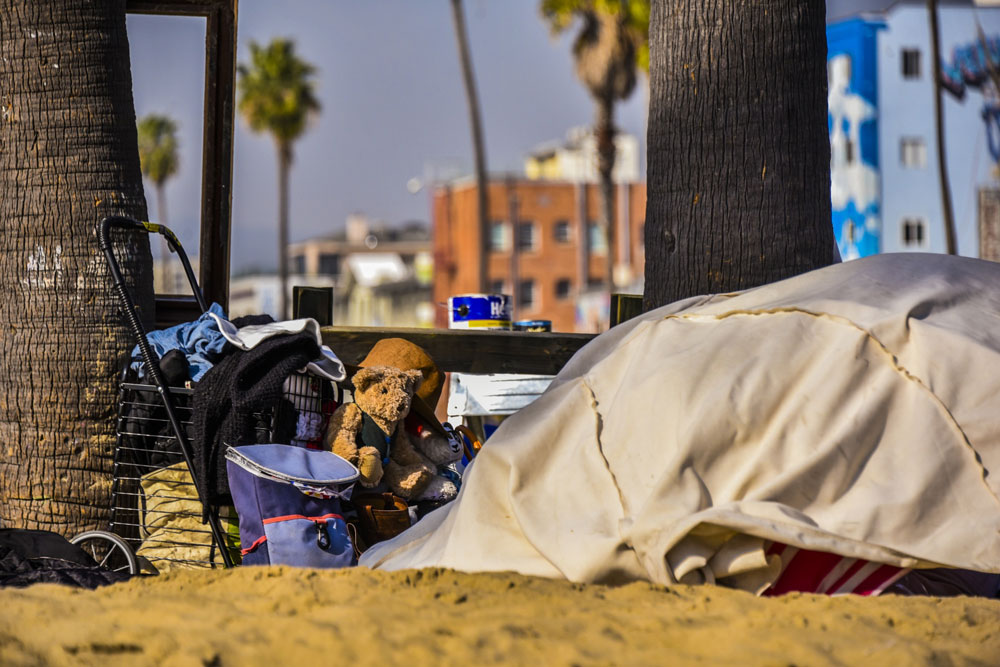
October 21, 2019; New York Times
Boulders on sidewalks. Tree stumps and branches on the streets. Spiky, prickly, plants in yards. All of these have appeared in California as a means to deter homeless persons from erecting tent cities or sleeping outside in their neighborhoods. This article in the New York Times alleges that even the most ostensibly liberal of Californians have begun to despair of their inability to “treat” the problem away.
In June 2019, NPQ addressed this issue in the Los Angeles area, with some optimism for all of the needed resources aligning to address and resolve the problem. Kori Kanayama concluded:
There is a convergence of a record number of overburdened renters desperate for housing they can afford, the willingness of policy makers to do something to lessen the crisis, and available resources. It could be a rare collaborative opportunity for nonprofits that normally toil in separate arenas to advocate together for visible change.
But, this is not just about renters. The “visible change” for many California residents became more and more tent cities in areas once thought immune, such as in wealthy suburbs or near newly built condos and business districts. Thomas Fuller, Tim Arango, and Louis Keene, writing for the New York Times, let the numbers tell the story:
San Jose, the nation’s 10th-largest city, counted 6,200 homeless people this year, a 42 percent increase since the last count two years ago. In Oakland, the figure climbed 47 percent. And it rose 17 percent in San Francisco, and 12 percent in Los Angeles, where the county counted so many homeless people—59,000—that they could fill Dodger Stadium.
Sign up for our free newsletters
Subscribe to NPQ's newsletters to have our top stories delivered directly to your inbox.
By signing up, you agree to our privacy policy and terms of use, and to receive messages from NPQ and our partners.
Homelessness has become a top concern among California’s residents, and voters and public officials are paying attention. California and its major cities have an affordable housing crisis and a huge wealth gap, which plays right into the attitudes around those who have ended up without a roof over their heads. While many would like to point to drugs and mental illness as the core issues, they are only a piece of this complicated puzzle.
The fact that this situation can be used as a symbol of the failure and hypocrisy of liberals by conservatives adds to the discomfort. As people harden their stances because they don’t want to see encampments on their way to school or fear for their safety going to work, advocates for new solutions are coming up short on many fronts. Some Los Angeles officials have even called for the governor to declare a state of emergency, as with forest fires or hurricanes. This would free up funds meant for use in a natural disaster to address the issue.
“I do think this is, in a lot of ways, a test of who are we as a community,” said John Maceri, chief executive of The People Concern, a social services agency in Los Angeles. “Some people who I’d put in the fed-up category, they’re not bad people. They would describe themselves as left of center, and sometimes very left of center, but at some point, they reach the breaking point.”
“I think those of us in the service-provider community always knew we weren’t going to solve the problem,” says Maceri. “But I think the expectation was we were going to make a significant dent. So, on the one hand, the message is we have all these resources to quote-unquote ‘solve’ this problem. And what the general public sees is, it’s not getting solved, it’s not getting better, it’s getting worse.”
Little wonder about that when we look at some of the dynamics. In California, where the iconic image we tend to hold of the wealth gap comes in the form of tech billionaires, what really drives wealth inequality is that the poor are getting poorer following an unequal recovery after the last recession. In cities where you find both, of course, there will be little wonder about the results.—Carole Levine













